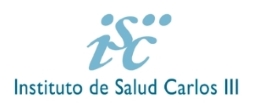- The study reveals a new cellular type, microglia ARG1+, which plays an important role in the establishment of the cholinergic neuronal system, involved in many crucial brain functions during early postnatal development.
- Microglia is essential in connecting numerous neuronal systems during central nervous system development. Microglia ARG1+ is found in specific regions of the developing brain, predominantly in the basal brain and ventral striatum.
- Additionally, this specific subpopulation of microglia has a distinct gene expression profile compared to classical microglia, which does not express ARG1, and appears to be associated with the onset of both neurodevelopmental and neurodegenerative diseases.
Sevilla, May 11th, 2023
Researchers from the Institute of Biomedicine of Seville (IBiS) have identified, after more than seven years of research, a new key cellular type whose role in the processes of memory and learning development is critical, published in the prestigious journal Nature Neuroscience.
The research, jointly led by the University of Seville- IBiS and the Karolinska Institutet, helps to understand how neuronal systems mature with decisive functions for human behaviour. In depth, the study highlights the role of microglia, a cellular ensemble that we have been experiencing a significant surge of information about in recent years due to its involvement in various brain pathologies such as Alzheimer's disease.
Microglia and their role in brain development
Microglia refers to a group of immune cells found in the central nervous system (CNS). These cells act as the first line of defence for the CNS against injuries, infections, and other threats. They also play a crucial role in maintaining neuronal homeostasis, clearing waste, and remodelling synapses (the connections between neurons).
“Microglia have historically been defined as the brain's macrophages, and as such, they belong to the innate immune system,” explains Dr. José Luis Venero, Professor of Biochemistry and Molecular Biology at the University of Seville and Research Group Leader in Neuronal Aging at IBiS. “However, they are highly dynamic cells, and it is becoming increasingly evident that this group also plays a decisive role in very important functions of the central nervous system, such as brain connectivity, regulation of neurogenesis [the emergence of new neurons], regulation of neuronal excitability, and more.”
During the development of the central nervous system, particularly in the early embryonic and postnatal stages, numerous neuronal systems become interconnected, ultimately forming the CNS. In this process, microglia play a fundamental role. Potential disruptions during these stages are associated with neurodevelopmental disorders such as autism spectrum disorders, bipolar disorders, and various cognitive impairments.
Discovering ARG1+ microglia
The international research team led by the Karolinska Institute's Institute of Environmental Medicine in Sweden and the University of Seville in Spain has described in this study how a particular subset of microglia expresses the enzyme Arginase-1. For this reason, the cell group has been named ARG1+ microglia. In light of the research, this subset contributes to the establishment of the cholinergic neuronal system, which is involved in many important brain functions during early postnatal development in mice.
Using whole-brain imaging of these animals, it was discovered that ARG1+ microglia are located in specific regions of the developing brain, predominantly in the anterior basal brain and ventral striatum, where numerous cholinergic neuron bodies are found. The ARG1+ microglial subclass coexists with the known homeostatic microglia (ARG1-) within these brain regions, indicating that they must have intrinsic properties. Genome sequencing analysis demonstrated that ARG1+ microglia exhibit a distinct gene expression profile compared to microglia that do not express ARG1.
“Our study has identified a specific subpopulation of microglia involved in the maturation of the cholinergic system,” emphasizes Dr. Venero. “This system is strongly affected in Alzheimer's disease. In fact, most of the recently identified risk genes in Alzheimer's disease are specifically associated with microglia.” This relationship, as the professor points out, may reveal a correlation between ARG1+ microglia and the onset of diseases such as Alzheimer's.
“It remains to be seen if the microglial population identified in our study has a direct relationship with this disease,” contrasts Dr. Venero on this matter. “However, as relevant data, Alzheimer's disease has a higher incidence in women. Interestingly, our study demonstrates that selective removal of the gene that characterizes this subpopulation [identified as arginase-1] in microglia leads to deficiencies in long-term memory processes, especially in female mice,” as indicated by Dr. Rocío Ruiz, a member of the research team and associate professor in the Department of Biochemistry and Molecular Biology at the University of Seville.
The study provides a better understanding of brain development and the contribution of microglial diversity to this process. It could also provide new clues on how to manage neurodevelopmental or neurodegenerative disorders that have a cognitive component. “It is important to consider that our study provides crucial insights into how neuronal systems mature with decisive functions in our behaviour,” the expert points out.
From accidental discovery to the future of combating Alzheimer's
This research is the result of seven years of work and represents, in the words of the researcher, “a tremendous collective effort involving different national and international groups.” The work was co-led by Dr. Bertrand Joseph from the Karolinska Institute in Sweden and Dr. José Luis Venero from the Institute of Biomedicine of Seville (IBiS), and it had the collaboration of two research groups from Pablo de Olavide University (UPO) led by Dr. Jose Ángel Armengol and Dr. Antonio Rodríguez-Moreno at the national level.
“The major challenge was to identify and characterize the function of a new microglial subpopulation,” Dr. Venero emphasizes once again. “The initial identification of this subpopulation was completely accidental. A postdoctoral student from Bertrand Joseph's group, Vassilis Stratoulias, set out to test a battery of antibodies on brain tissue from young mice and found selective labelling in areas associated with cholinergic tissue. From that moment, our joint work to characterize its function led us to selectively delete the ARG1 gene in microglial cells.”
Subsequent work, combining transcriptomics, cellular and molecular biology, behaviour, electron microscopy, and electrophysiology techniques, has kept the group busy for the past seven years. During this, period, hey aimed to identify and understand how the ARG1+ microglial population participates in the maturation and establishment of long-term memory and learning processes.
“Our study reinforces a prevailing opinion about the existence of different microglial subpopulations with differentiated functions within the CNS. Microglial heterogeneity is particularly relevant during brain development stages. Malfunctioning of microglia can be a trigger in the etiopathology of very important neurodevelopmental or even neurodegenerative diseases such as Alzheimer's or Parkinson's. This research helps open new avenues that will allow us to better understand how these diseases occur and how we can combat them,” the experts state.
Referencia del artículo
DOI: 10.1038/s41593-023-01326-3
Images:
Fig 1.- Author - Mattias Karlen Fig 2.- Research Group Neuronal Aging -IBiS
----------------------------------------------------------------------------------------------------------------------------------
About IBiS
The Institute of Biomedicine of Seville (IBiS) is a multidisciplinary center focused on (1) carrying out fundamental research on the causes and mechanisms of the most prevalent pathologies in the population and (2) the development of new methods to diagnose and to treat diseases.
El IBiS is made up of 42 consolidated groups and 42 affiliated groups led by researchers from the University of Seville, the Spanish National Research Council (CSIC) and the Virgen del Rocío and Virgen Macarena University Hospitals and Valme, organized around five thematic areas: Infectious Diseases and Immune System, Neurosciences, Onco-hematology and Genetics, Cardiovascular Pathology, Respiratory / Other Systemic Pathologies and Liver, Digestive and Inflammatory Diseases.
IBiS depends institutionally on the Department (Consejería) of Health and Consumption of the Junta de Andalucía; the Andalusian Health Service (SAS); the Department (Consejería) of University, Research and Innovation; the University of Seville and the Spanish National Research Council (CSIC). It is managed by the Public Foundation for the Management of Health Research in Seville (FISEVI).
More information:
Angeles Escudero
Unidad de comunicación| UCC+i
InstitutodeBiomedicinadeSevilla - IBiS
Campus Hospital Universitario Virgen del Rocío
Avda. Manuel Siurot s/n
41013 Sevilla
Tel 34-682730351
Email: comunicacion-ibis@us.es















